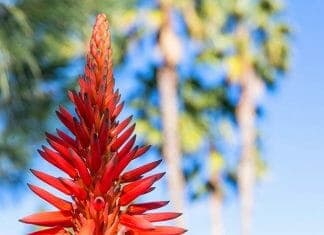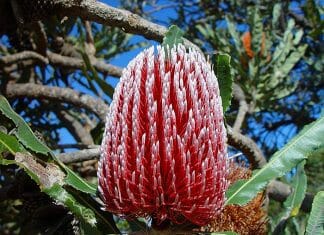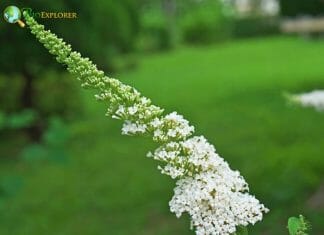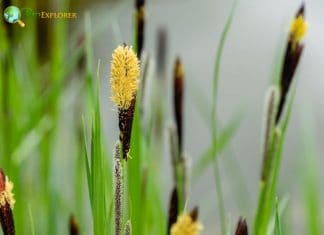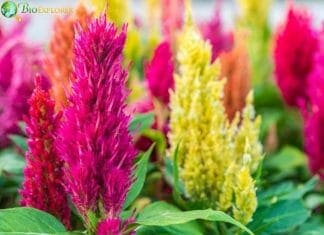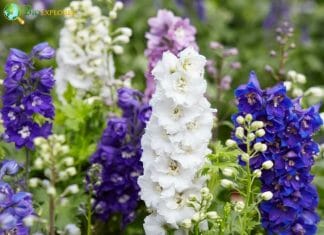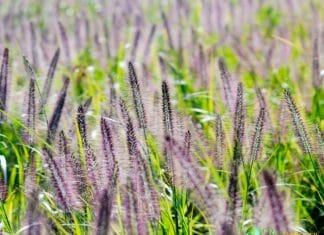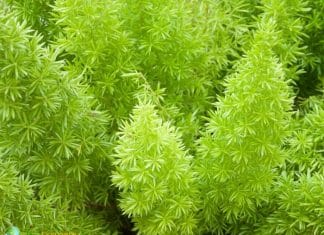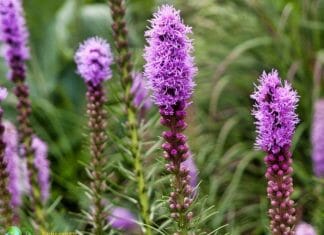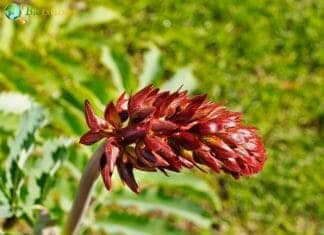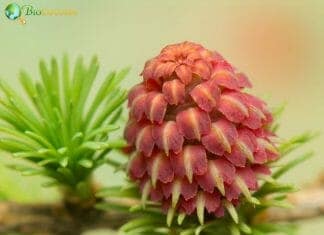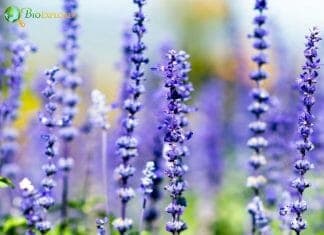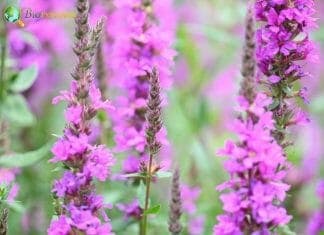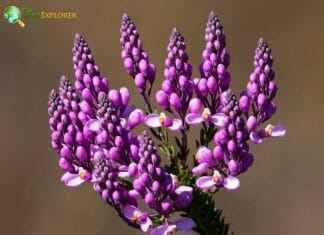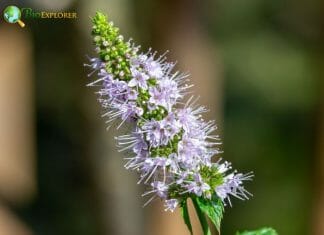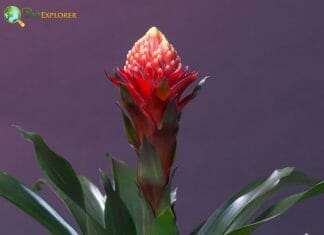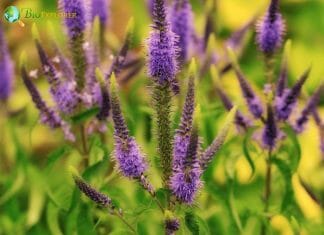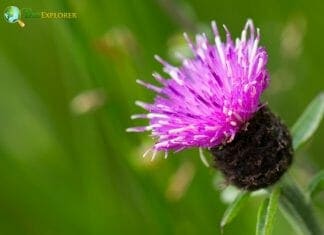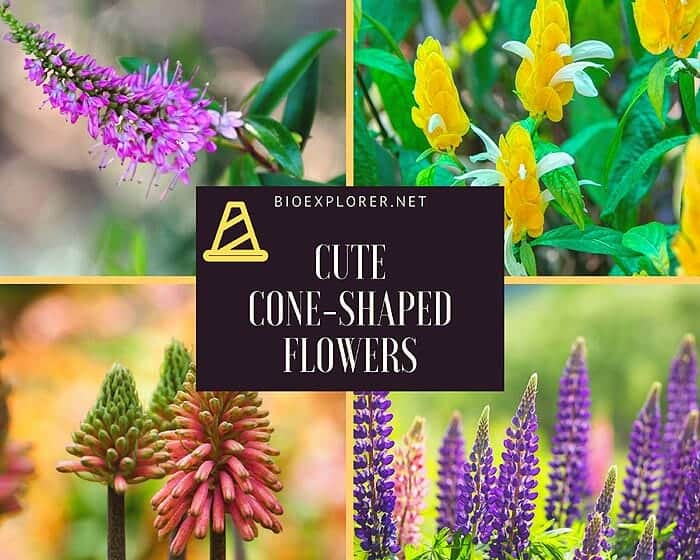
Cone-shaped flowers are three-dimensional blooms that narrow evenly from the bottom to the apex of the flower to form a cone-shaped appearance.
Many perennials develop cone-shaped blossoms during the spring and summer months. Typically, these flowers die out in the winter months and then come back to life in spring.
Like bell-shaped flowers, cone shape flowers give your gardens or landscape a unique geometrical element.
Cone-Shaped Flowers
Here is a collection of all conical shaped flowers.
Aloe Succotrina
Flower Type: Shrubs
Aloe succotrina grows high on the cliffs and ledges of the mountains of the Western Cape and southwestern South Africa. It's an attractive aloe that thrives in Strandveld and Fynbos gardens.
Banksia
Flower Type: Trees
Banksia is a genus of about 100 species in the Proteaceae plant family and is native to Australia and South Africa. These popular garden plants and Australian wildflowers are easily recognized by their characteristic fruity "cones" and buds as well as flower spikes.
Buddleia
Flower Type: Shrubs
Commonly referred to as a butterfly bush, Buddleia davidii is a deciduous shrub native to forest clearings, limestone outcrops, mountain slopes, and Rocky River banks in America, Africa, and Asia. Buddleia (orth. Var. Buddleja) is a genus with over 140 flowering plant species in the Scrophulariaceae (figwort) family. Many named varieties have been introduced over the years, expanding the flower range colors to include pink, yellow, white, and red.
Bugleweed
Flower Type: Perennials
Ajuga reptans, commonly known as Bugleweed, are perennial, broad-leaved, evergreen to semi-evergreen herbaceous groundcover of the mint family (Lamiaceae). The genus includes around 40 species of plants. Spikes of small bluish-purple flowers appear in mid to late spring, protruding up to 10-inches above the foliage.
Delphinium
Flower Type: Perennials
Delphinium is a famous ornamental plant that adds height and a pop of color to commercial and home gardens. Usually, its flowers come in gorgeous shades of blue and purple. Still, other cultivars showcase more yellow, red, white, or pink.
Fountain Grass
Flower Type: Perennials
Like many herbs, Fountain Grass (Pennisetum setaceum) looks spectacular when lit by the setting or rising sun. However, fountain grass also sends out beautiful, fluffy bloom plumes in late summer. The red, pink, or white plumes (depending on the variety) continue into autumn and give the plantings a casual and relaxed look.
Foxtail Fern
Flower Type: Perennials
Foxtail fern is a hardy and easily recognizable perennial herb that grows in many indoor containers and gardens. Foxtail fern has a tall, fuzzy, loop-like appearance. It produces small white flowers followed by vibrant red fruits in summer.
Gayfeather
Flower Type: Perennials
Gayfeather (Liatris spicata), commonly known as the Blazing Star, Marsh Blazing Star, or Dense Blazing Star, is a tall, erect, lumpy perennial native to low-lying wetlands, grasslands, and marsh edges. It has terminal ends (6 to 12" long) of stalkless, round, downy, dark purple buds (up to 3/4" wide each) that appear on stiff, upright, leafy pedicels.
Hedysarum
Flower Type: Biennials
Hedysarum coronarium, commonly known as sulla clover, sulla, or French honeysuckle, is a perennial or biennial herbaceous plant that generally grows up to 3 feet tall is equal in width. The bright red, extremely fragrant, pea-like flowers bloom from the end of spring to the beginning of summer in dense axillary clusters on upright flower stalks.
Honeyflower
Honeyflower (Melianthus major) is a strikingly large subshrub in the Melianthaceae family. Its leaves are alternately arranged and are made up of several leaflets with strongly serrated edges. Its flowers have a claw-like appearance with 4 dark brown to rust-red petals of various sizes.
Larch
If you like the effect of a coniferous plant and a deciduous tree's bright color, you can have both with the Larch tree (Larix spp.). Nestled between the needles, you'll find pink flowers that will eventually turn into cones. The cones start out yellow or red and turn brown as they ripen.
Lavandula
Flower Type: Perennials
Lavandula angustifolia is undoubtedly amongst the most popular herbaceous plants. With its purple flowers, the fragrant plant adorns many window sills, gardens, and balconies. Lavandula typically blooms between late May and mid-September. There it forms purple flowers, rarely white, which are arranged in pseudo-whorls.
Loosestrife
Flower Type: Perennials
Purple loosestrife (Lythrum salicaria) is a flowering plant in the Lythraceae family. It is a large family of plants with over 150 species of evergreen and herbaceous perennials. The sessile leaves are alternate or opposite on the stalk. The purple loosestrife inflorescence consists of many showy, white, magenta, or reddish-purple flowers found in racemes.
Lupine
Flower Type: Annuals/Perennials
If you are looking for an eye-catching perennial with summer flowers that will stand out from the crowd, lupine (Lupinus polyphyllus) is a favorite. The flowers open from the bottom up and sometimes feature over one color on the same plant, in shades ranging from soft pastels to violet blues and deep reds.
Milkwort
Flower Type: Perennials
Milkwort (Polygala vulgaris) might not have the most endearing name. Still, it's one of the stars of the early-fall summer show in Europe. The flowers are usually dark blue to light blue, but they can also be pink, purple, and white. The flowers have small petals surrounded by a pair of flat-top sepals that look like petals.
Peppermint
Flower Type: Perennials
Peppermint (Mentha × piperita, also called Mentha balsamea) is a hybrid mint, a cross of spearmint and watermint. Native to the Middle East and Europe, the plant is now widespread and grown in many parts of the world. The axis of the stem is usually hairy and usually highly branched. Peppermint flowers can be purple, pink, and sometimes white.
Quesnelia
Quesnelia is a genus of flowering plants in the Bromeliaceae family, a subfamily of the Bromelioideae. The genus consists of about 20 species of plants that are native to southeastern and eastern Brazil. Quesnelia is a perfect landscaping bromeliad with its vibrant flower in various colors.
Speedwell
Flower Type: Perennials
Veronica, also known as Speedwell, is an easy-to-grow, carefree perennial with long spikes of tiny white, pink, blue, or purple petals. With around 500 species, Veronica is the largest genus in the Plantaginaceae family of flowering plants. The precise origin of this plant cannot be exactly determined.
Teasel
Flower Type: Biennials
Teasel (Dipsacus spp.) is a genus of plants from the Caprifoliaceae (honeysuckle) family. Members of this genus are typically known as teazle or teazle. The flowers are white, purple, lavender, or dark pink. Dipsacus species are endemic to North Africa, Asia, and Europe. The genus name Dipsacus is a Greek word meaning thirst.
Cite This Page
APA7MLA8Chicago
BioExplorer.net. (2025, December 26). Cone-Shaped Flowers. Bio Explorer. https://www.bioexplorer.net/plants/flowers/cone-shaped/.
BioExplorer.net. "Cone-Shaped Flowers" Bio Explorer, 26 December 2025, https://www.bioexplorer.net/plants/flowers/cone-shaped/.
BioExplorer.net. "Cone-Shaped Flowers" Bio Explorer, December 26 2025. https://www.bioexplorer.net/plants/flowers/cone-shaped/.


